Structure of Present Perfect Subject conjugated form of 'to have' Past Participle of Main Verb Object The auxiliary verb of perfect tenses is 'to have' which needs to be used in the first form in present tense Make sure to conjugate 'to have' to agree with the subjectTo make the positive present perfect tense, use 'have' / 'has' the past participle Make the past participle by adding 'ed' to regular verbs (for example, 'play' becomes 'played') There are a few verbs that change their spelling when you add 'ed' (for example, 'study' becomes 'studied')The present perfect tense is used to describe actions that started in the past, but still have effect on the present The focus in the present perfect tense is the result of the action Generally, the time at which the action started (or stopped) is not important Every sentence in this tense has a verb to have as an auxiliary verb in addition

Topic Present Perfect Tense Lesson Goal Students Will Be Able To Learn And Use Present Perfect Tense Ppt Download
Present perfect tense of be
Present perfect tense of be-This lesson is an overview of the present perfect tense What it looks like, how to use it and when to use it!Short/contracted forms and long forms in the Present Perfect;
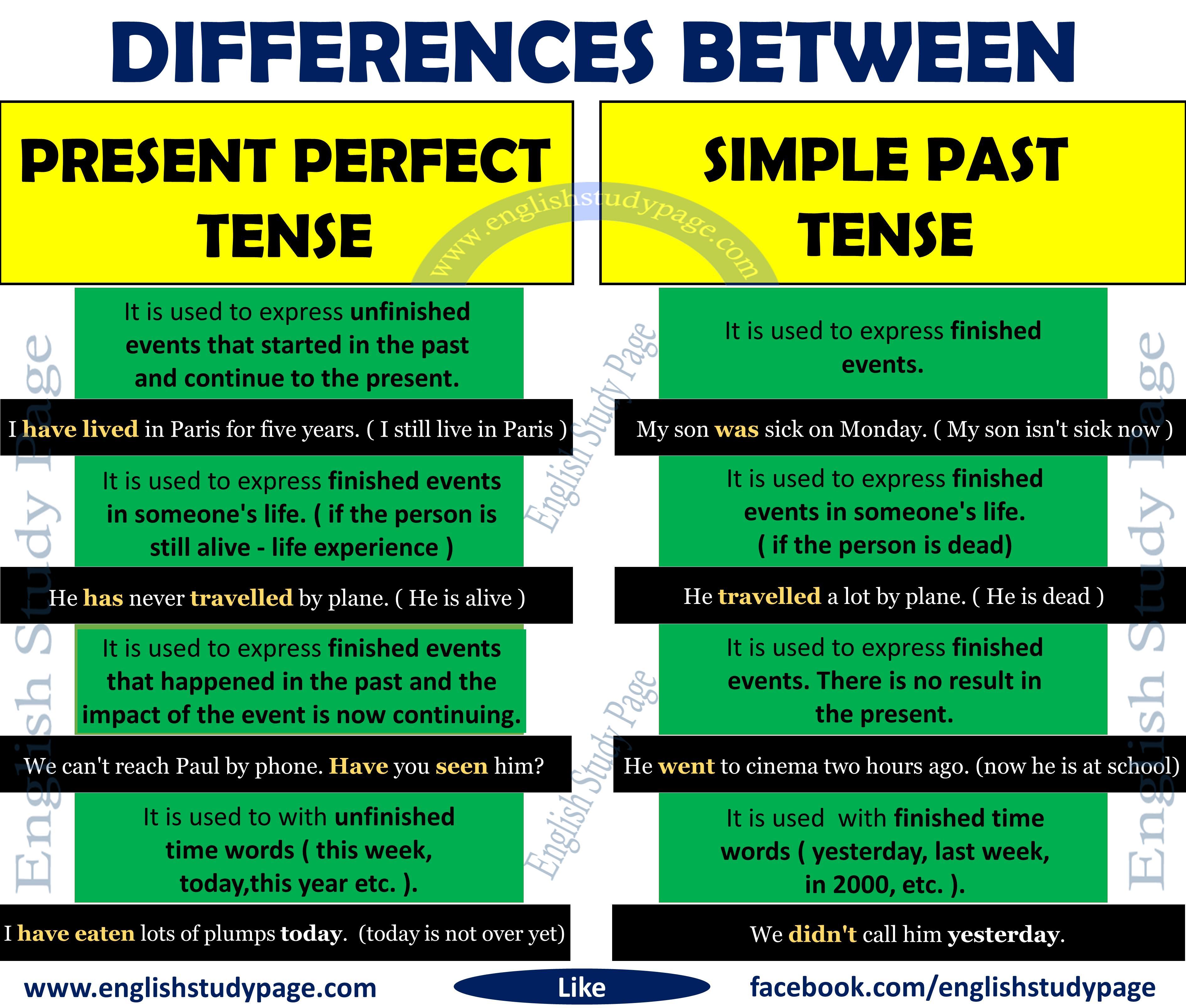



Differences Between Present Perfect Tense And Simple Past Tense English Study Page
Present Perfect (Kurzübersicht) be, do, have im Present Perfect Bildung von Sätzen im Present Perfect Fragen im Present Perfect Grafische Darstellung des Present Perfect Kurzformen und Langformen im Present Perfect Schreibweise der Verben im Present Perfect Signalwörter im Present Perfect Verwendung des Present Perfect Is it possible that the simple present tense and the past perfect tense are used in the same sentence?Present Perfect (Summary) be, do, have and irregular verbs in the Present Perfect;
Diagram of the Present Perfect;Questions in the Present Perfect;Grammar B1B2 Present perfect simple and present perfect continuous 1 Read the explanation to learn more Grammar explanation We use both the present perfect simple (have or has past participle) and the present perfect continuous (have or has been ing form) to talk about past actions or states which are still connected to the present
What Are the Perfect Tenses? The auxiliary verb of perfect tenses is 'to have' which needs to be used in present tense Make sure to conjugate 'to have' to agree with the subject 'To have' is always followed by the Past Participle of the main verb Therefore, we need to use the past participle of 'to be' which is 'been' 'Been' is followed by theThe present perfect tense might be a hard tense for learners of English and students often have a hard time keeping the present perfect tense apart from the
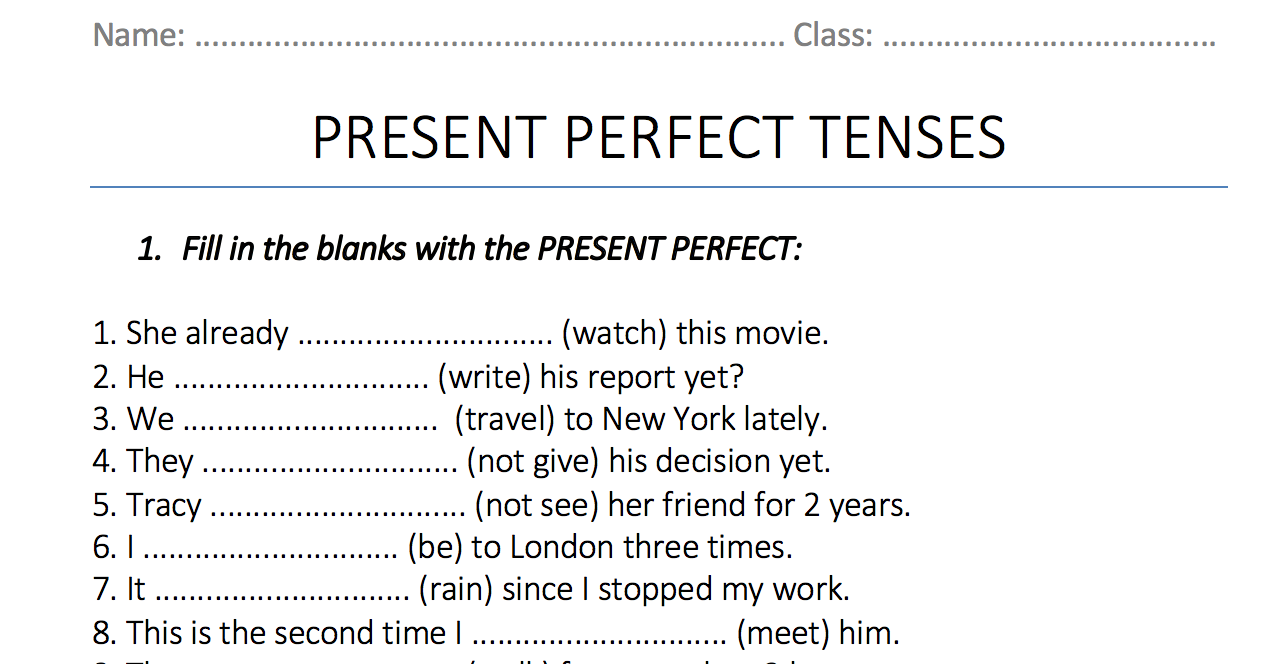



299 Free Present Perfect Worksheets Teach Present Perfect With Confidence




The Present Perfect Tense The Present Perfect Tense Refers To An By Pmcfb Medium
The Present Perfect is a very important tense in English, as you've probably already seen It's used in a variety of ways, which means it can take some time for English students to become familiar with it A great way to help you learn and remember the different uses of the present perfect is to learn the words ever, never, already, and yetThe Present Perfect Progressive Tense (#1) The present perfect tense can be simple or progressive These two different kinds of present perfect are different in both form and meaning / usage Let's look at the form first The Present Perfect Progressive Tense Form The present perfect progressive tense combines the formConjugación verbo be inglés present, past tense, past perfect, present perfect, future Ver la traducción en contexto para be y su definición ©21 ReversoSoftissimo




Present Perfect Online Exercise For Quinto Primaria




Present Perfect Tense Learn English Present Perfect Perfect Tense
PRESENT INDEFINITE TENSE PRESENT CONTINUOUS TENSE PRESENT PERFECT TENSE PRESENT PERFECT CONTINUOUS TENSE LoadingGrammar The present perfect continuous tense (also known as the present perfect progressive tense) shows that something started in the past and is continuing at the present time The present perfect continuous is formed using the construction has/have been the present participle (root ing) I have been readingWar and Peace for a month now The present perfect tense combines the present tense (the helping verbs "has" or "have") and the perfect aspect to describe an event that happened in the past that has present




Present Perfect Tense Download Complete Pdf Engdic




Present Perfect Tense Online Activity For High School
The present perfect tense (sometimes referred to as the present perfect simple tense) is formed by using the present tense of the auxiliary verb have (or has, if used with thirdperson singular pronouns) along with the past participle of the "main" verb Despite its name, the present perfect is used to give general information about something that happened in the past (anytime "beforeThe present perfect is a verb tensewhich is used to show that an action has taken place once or many times before now The present perfect is most frequently used to talk about experiences or changes that have taken place, but there are other less common uses as well Read on for detailed descriptions, examples, and present perfect exercises Present Perfect Tense The present perfect tense is utilized to demonstrate a connection between the present and the past The season of the activity is before now however not indicated, and we are frequently more inspired by the outcome than in the activity itself
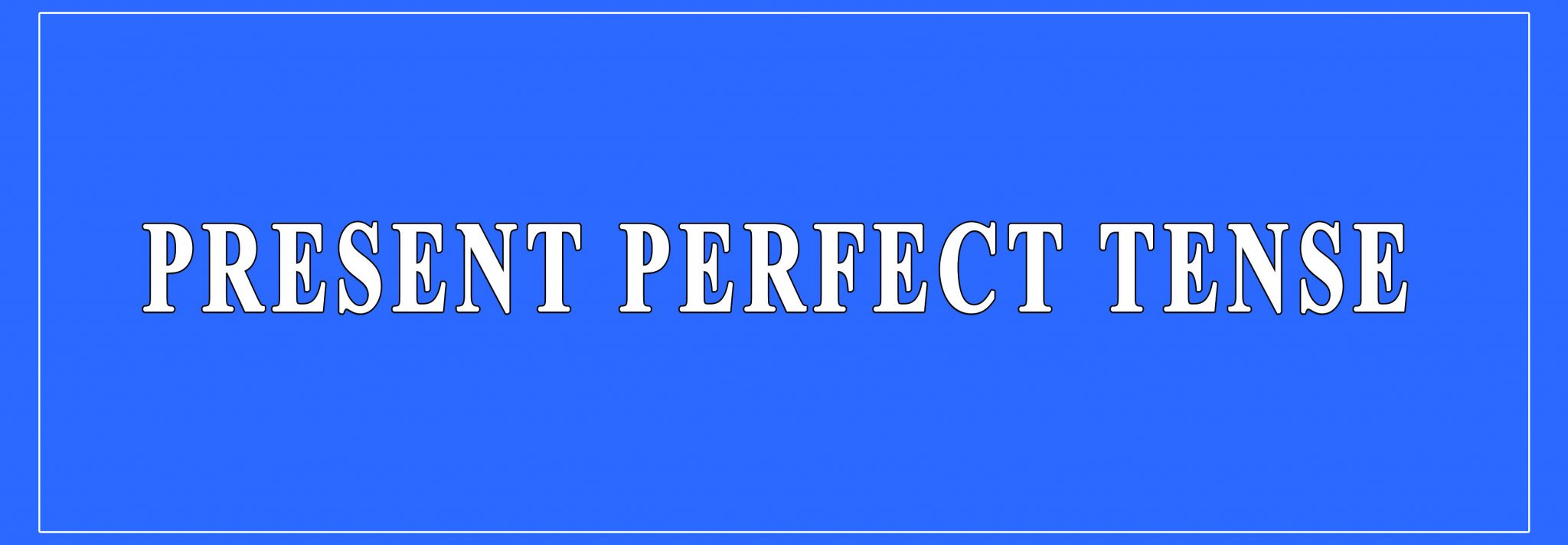



Present Perfect Tense Definition And Examples Structure Of Sentences




Present Perfect Tense With Games Exercises Pictures And Examples
Conjugate the English verb be indicative, past tense, participle, present perfect, gerund, conjugation models and irregular verbs Translate be in context, with examples of use and definitionWe have = ´ve seen this film before They have = ´ve bought a new car 7 Present Perfect Negative Sentences I Have not = haven't beenThe present perfect tense describes an action that began in the past (despite being a present tense)




Present Perfect Tense Forms Interactive Exercise Photocopiables
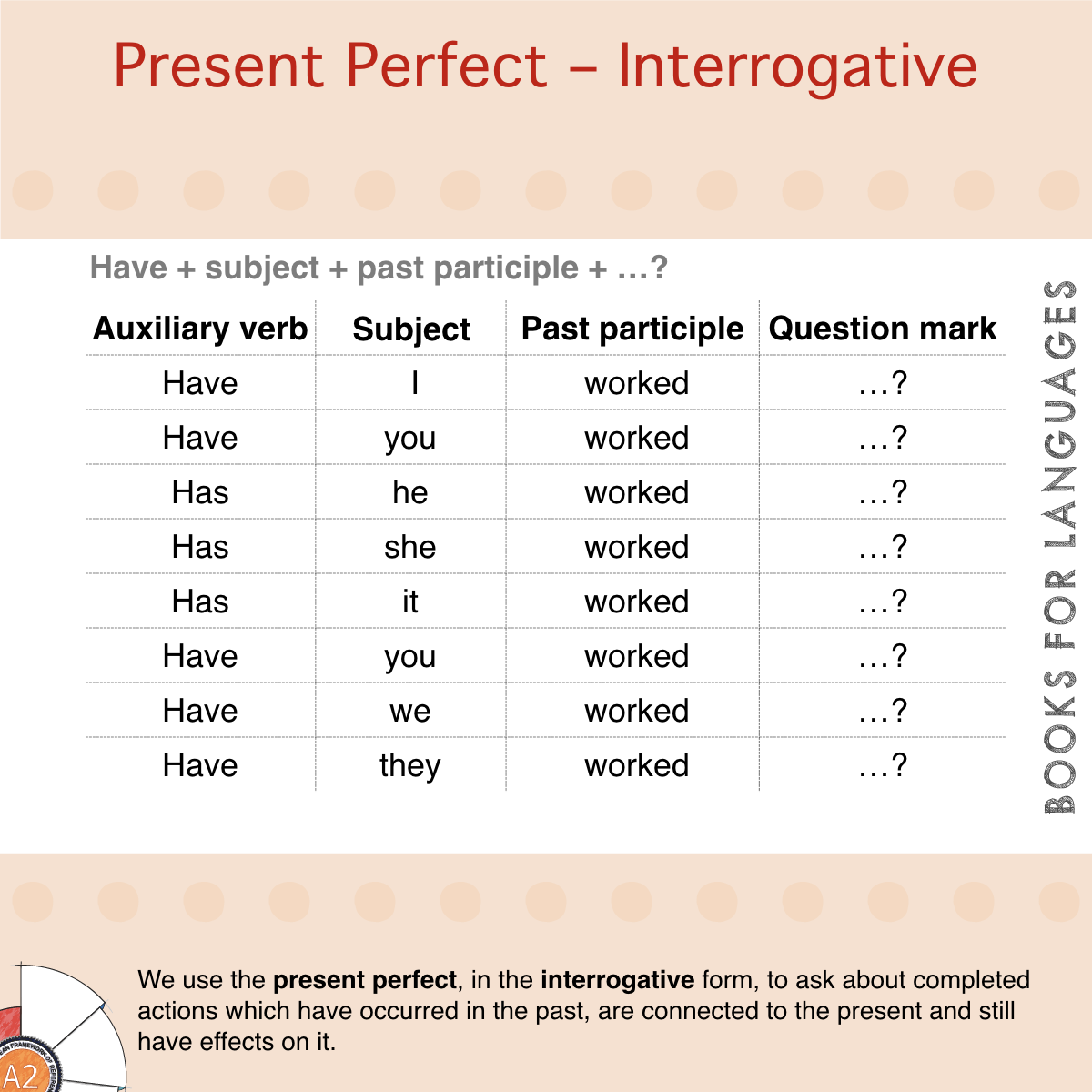



Present Perfect Interrogative English Grammar Level
But time and again, Simonton finds that they backtrack, returning to iterations that they had earlier discarded as inadequate Originals How Nonconformists Change the World grammar wordusageTo create the present perfect tense of any verb, you will combine the present tense of the verb "to have" plus the past participle of the main verb of the sentence The past participle of a regular verb is the base word plus –ed You can find a list of the past participle of irregular verbs here One example of this tense is "have jumped"Spelling of verbs in the Present Perfect;
(80).jpg)



English Grammar Quiz The Perfect Tenses Present Past And Future Proprofs Quiz
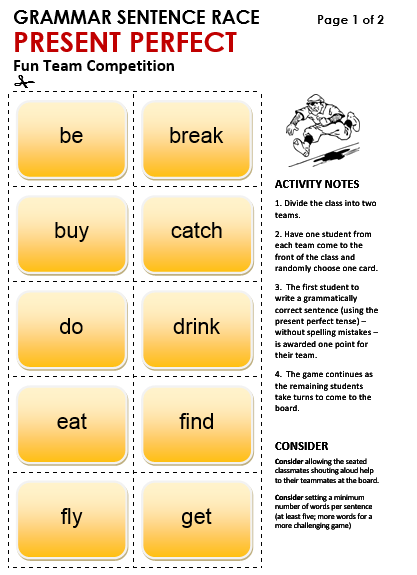



Present Perfect Simple All Things Grammar
The company has just announced their sales results (Present Perfect) Summary Remember that the past tense and present perfect tense can both be used to talk about things that happened in the past The only difference is that we can use a specific time with the past tense, but we cannot use a specific time with the present perfect tense In the perfect tenses, the verb (to) have is always the auxiliary verb In the present perfect tense, the main verb is in the past participle form This is not difficult for regular past tense verbs For regular verbs, the past participle form of the verb is the same as the past tense verb, so you just add ed! Present Perfect Continuous Tense is a verb tense that is used to describe the present situation which is incomplete and includes a progressive action In easy words, it shows an action that is continuing up until now This tense can be used to describe an unfinished time period from the up until the present
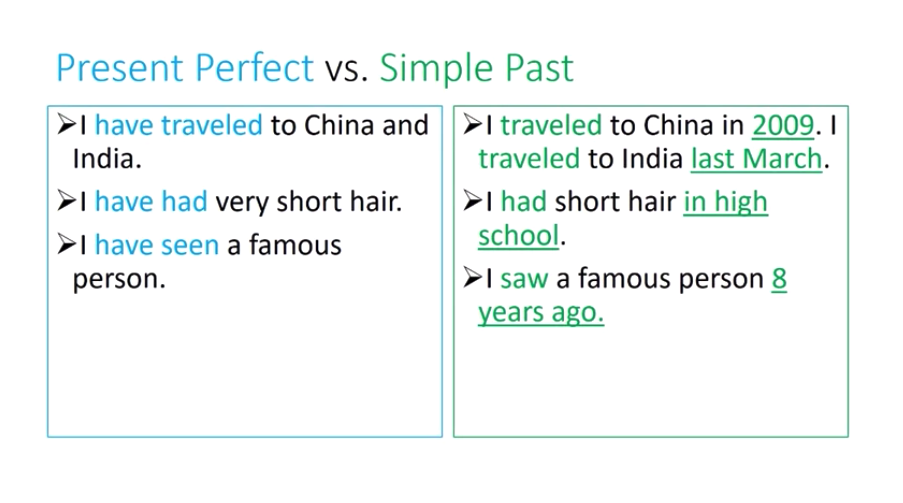



Present Perfect Tense Asean Scholarships




Present Perfect Tense Examples Exercise And Usage Examplanning
(with Examples) Perfect tense is a category of verb tense used to describe completed actions It covers the past perfect tense, the present perfect tense, and the future perfect tense It is sometimes called the complete tense See The present continuous tense and Form of adverbs and The present perfect continuous tense The passive form of a main verb uses the appropriate form of be followed by the past participle See Active and passive The verb be is also used as a main verb It is commonly found joining a subject to its complementSignal words for the Present Perfect;




English Tenses Past Simple And Present Perfect Eslbuzz Learning English
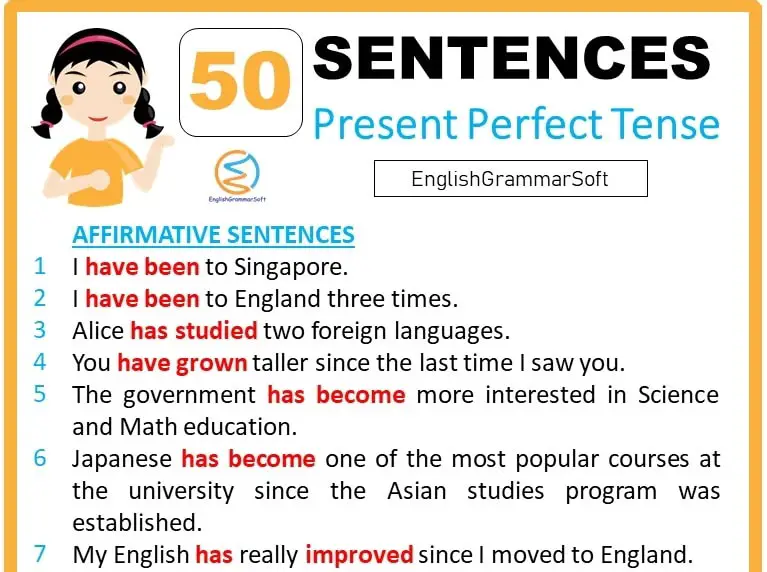



Present Perfect Tense Sentences Affirmative Negative Interrogative 50 Examples Englishgrammarsoft
The present perfect is formed from the present tense of the verb have and the past participle of a verb We use the present perfect for something that started in the past and continues in the present They've been married for nearly fifty years She has lived in Liverpool all her life when we are talking about our experience up to the presentThe present perfect continuous (also called present perfect progressive) is a verb tense which is used to show that an action started in the past and has continued up to the present moment The present perfect continuous usually emphasizes duration, or the amount of time that an action has been taking placeThe Present Perfect Tense (#1) Dennis Oliver The Present Perfect Tense #1 The present perfect tense is very common in English Its form is easy to understand Present Perfect Tense Form The present perfect tense always has two parts have or has and the past participle ("third form") of the verb I



1




Present Perfect Tense Examples Of Using Present Perfect Tense After Looking At Shirley S Dairy Have You Noticed Any Use Of Present Perfect Tense If Ppt Download
In summary, the present perfect tense is formed by Subject has/have past participle of verb used to express actions of duration that occurred in the past (before now) of unspecified time used to express actions that started in the past but continue to the present used to express actions that started in the past but stopped recently Present Perfect Tense Sentences (50 Examples of Affirmative, Negative & Interrogative Sentences) The present perfect tense is used to express a past event that has happened at an unspecified time where the exact time is not known and also isRecommended tense Example Literature review (or whenever discussing other researchers' work) Past Martin () addressed Present perfect Researchers have studied Method Description of procedure Past Participants took a survey Present perfect Others have used similar approaches Reporting of your own or other researchers' results




Present Perfect Tense Worksheets K5 Learning




Present Perfect Tense Detailed Expression English Study Here
The present perfect tense expresses actions that happened at time that is not specific and actions that started in the past but continue to the present To form the present perfect Subject has/have past participle of verbStructureSubject have/has main verb (pastForm of the Present Perfect;



1
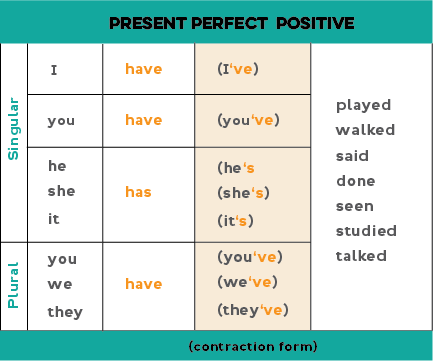



Present Perfect In English
1 We use this tense when we want to talk about unfinished actions or states or habits that started in the past and continue to the present Usually we use it to say 'how long' and we need 'since' or 'for' We often use stative verbs I've known Karen since 1994 The present perfect tense describes an action that has taken place or a condition that has come to pass by the time of speaking Other conditions will be described below To form the present perfect tense, use has/have past participle of the verbThe present perfect tense says that an action was completed at a time before the present, and the results or consequences of the action are relevant now The present perfect is formed using the present tense of the verb "to have" and the past participle of the main verb
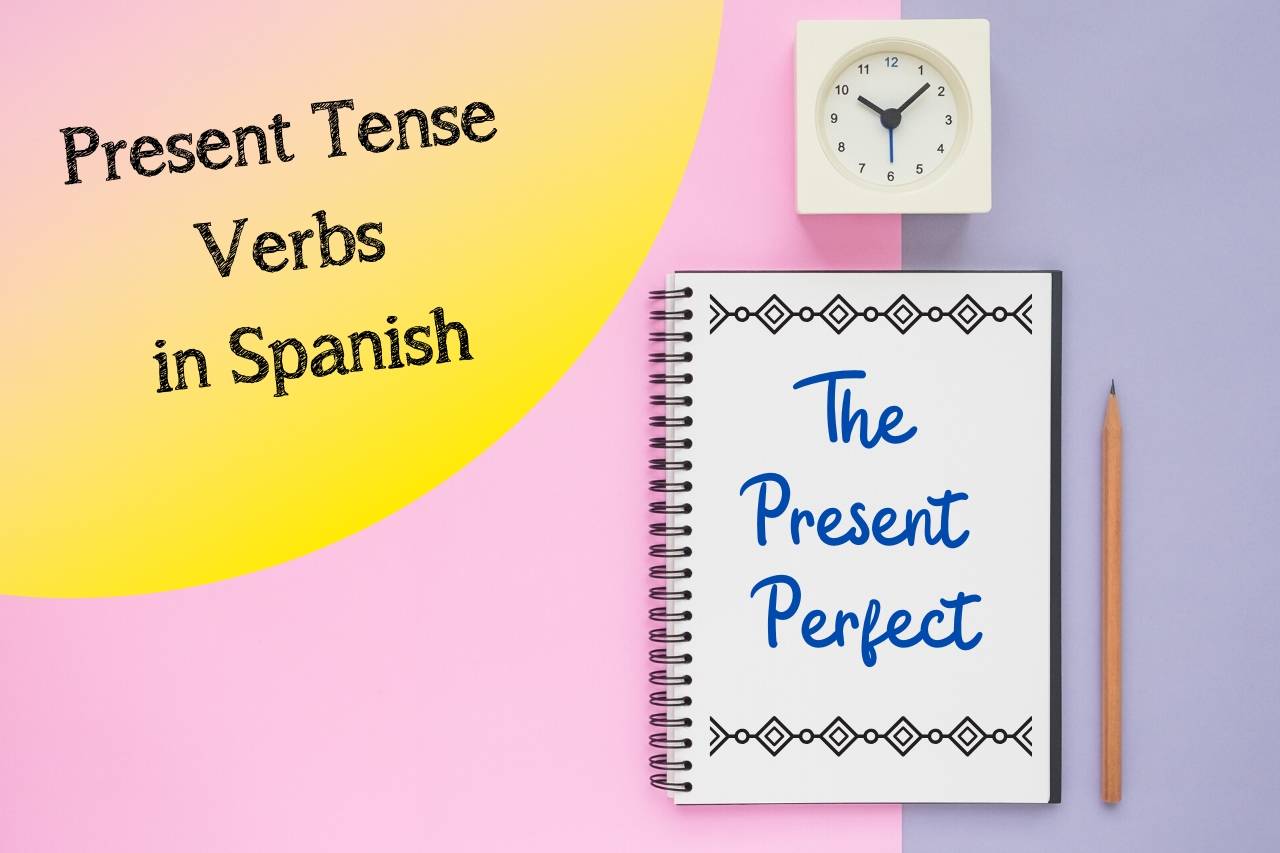



Present Tense Verbs In Spanish Part 3 The Present Perfect Tense
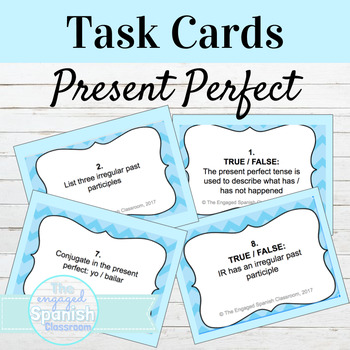



Spanish Present Perfect Tense Task Cards By The Engaged Spanish Classroom
100 Sentences of Present Perfect Tense Examples of Present Perfect Tense 1My sister has already made a big cake 2You have grown since the last time I saw you 3It hasn't drunk the water 4I have seen that movie 5We haven't received any mail since we were retired 6They haven't gone to the shopping center 7Have they played the piano?The present perfect tense refers to an action or state that either occurred at an indefinite time in the past (eg, we have talked before) or began in the past and continued to the present time (eg, he has grown impatient over the last hour) This tense is formed by have/has the past participleØ Most time words work with more than one tense Ø In the present, past, and future perfect progressive tenses, for is not always necessary, but it is frequently used Ø *Before and after do not require the use of the past perfect, but it is possible Time Clause Patterns




Present Perfect Tense Vs Past Simple Tom S Story A Comical Story Of Tom The Esl Student Video Youtube




Present Perfect Tense What Is The Present Perfect Tense
Use of the Present PerfectThis page shows the basic English tenses with the irregular verb BE, in affirmative/positive, negative and interrogative/question forms With example sentences For ESL learnersThe present perfect tense is a tense used in present to indicate the action that has taken place at some specific time It uses auxiliary verb and past participle for the main verb ie verb ed Some examples of present perfect tense are – I have watched




Present Perfect Tense Part 1 No 1 Institute



1
Present Perfect Positive Sentences I have = ´ve been to Moscow You have = ´ve finished the exercise He Has = ´s just gone home She Has = ´s already had a holiday this year It Has = ´s broken! The present tense is a grammatical tense used for verbs that describe an action happening right now It is considered easy to use and exists in all languages The present tense is broken down into four different categories present simple, present continuous, present continuous and present perfect continuousPresent Perfect Tense The Present Perfect tense is a rather important tense in English, but it gives speakers of some languages a difficult time That is because it uses concepts or ideas that do not exist in those languages In fact, the structure of the Present Perfect is very simple
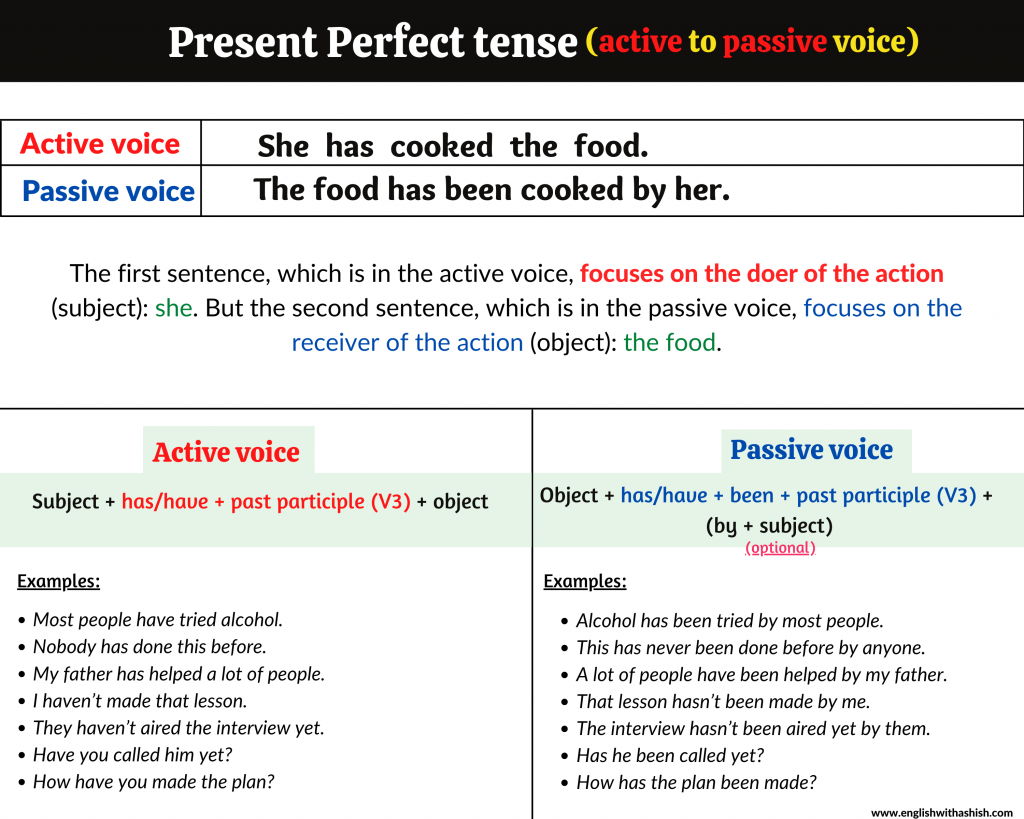



Active Voice To Passive Voice In Present Perfect Tense Examples And Practice Set




Selfaccess Learning Topic Present Perfect Tense Level P




Test English Prepare For Your English Exam




English Grammar Lesson 3 Dialogue Using The Present Perfect Continuous Tense Learn English With Africa




Present Perfect Tense Definition Rules And Useful Examples 7esl




Present Perfect Tense English Esl Worksheets For Distance Learning And Physical Classrooms
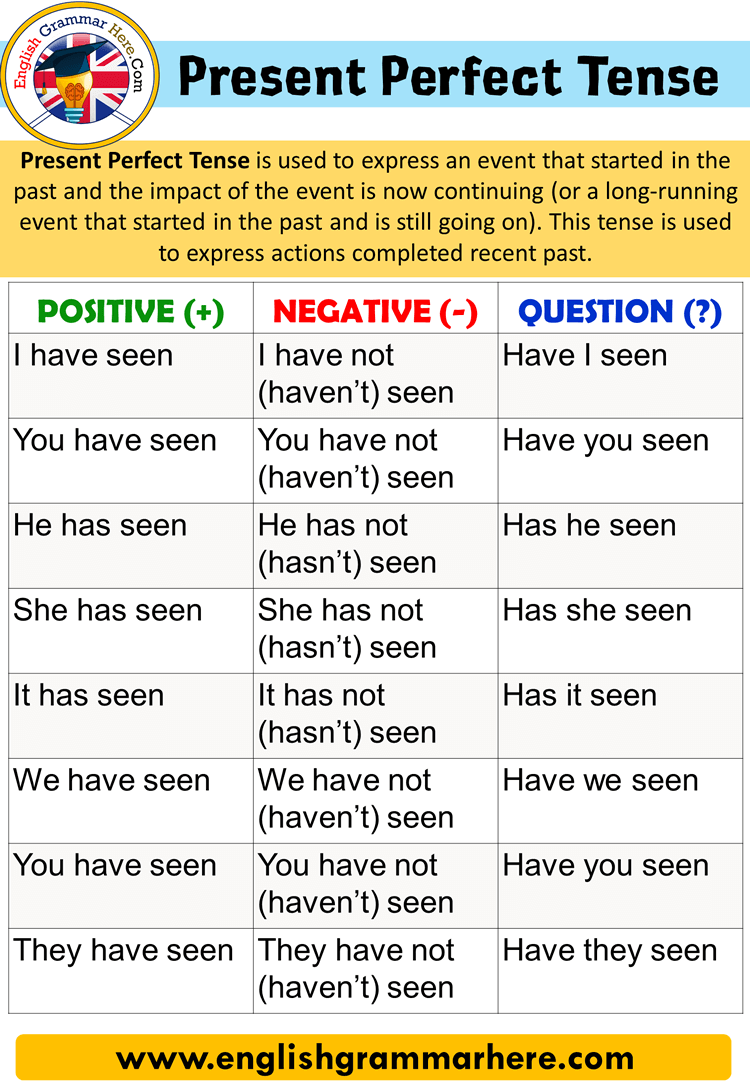



Present Perfect Tense Using And Examples English Grammar Here



Present Perfect Tense In English English Study Here
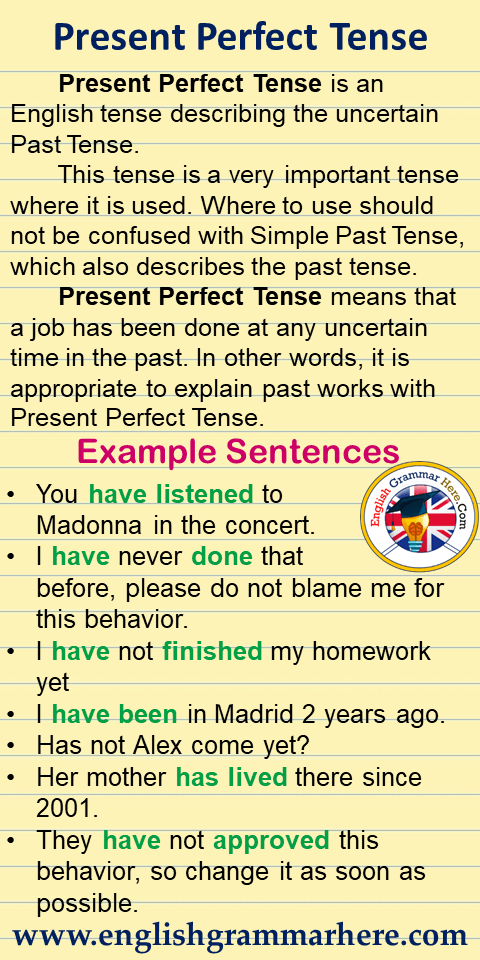



Present Perfect Tense Notes And Example Sentences English Grammar Here




Present Perfect Tense Definition Examples Rules Onlymyenglish




Present Perfect Tense Vocabulary Home
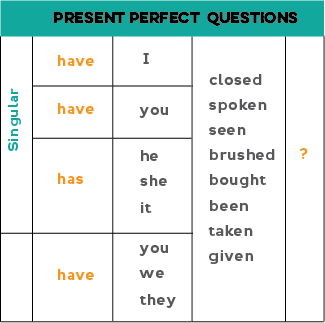



Present Perfect In English
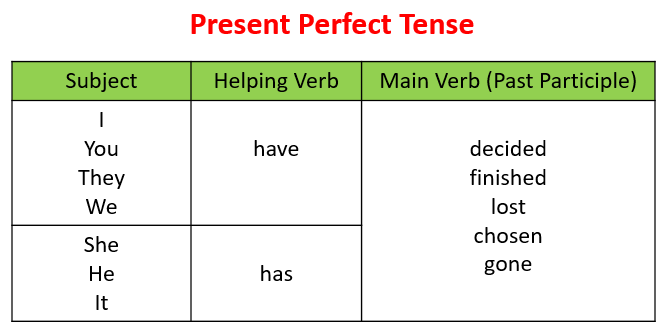



Present Perfect Tense Video Lessons Examples Explanations




Advanced Learner S English Grammar Present Perfect Tense




Present Perfect Tenses Definition And Example Sentences Present Perfect Tense Think About The Gatherings Y Perfect Tense Present Perfect Learn English Words
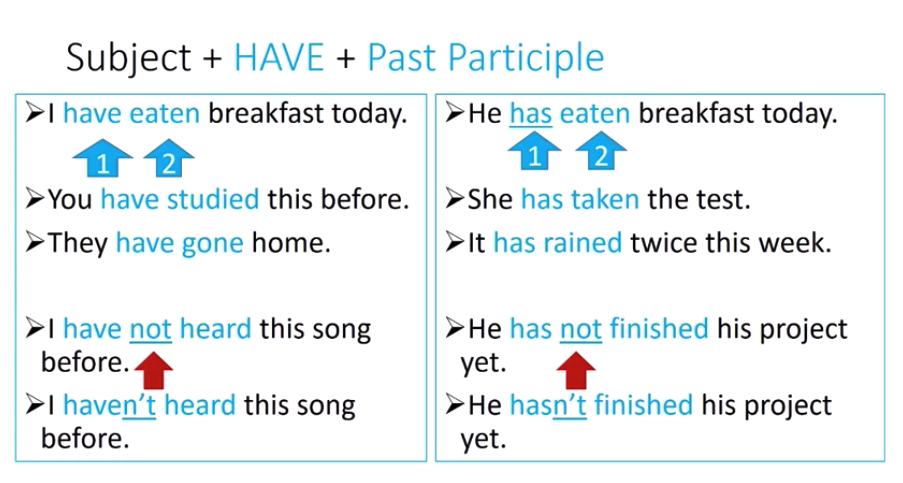



Present Perfect Tense Asean Scholarships




Let S Practise The Present Perfect Tense Worksheet




Present Perfect Tense Definition Useful Examples And Exercise Esl Grammar
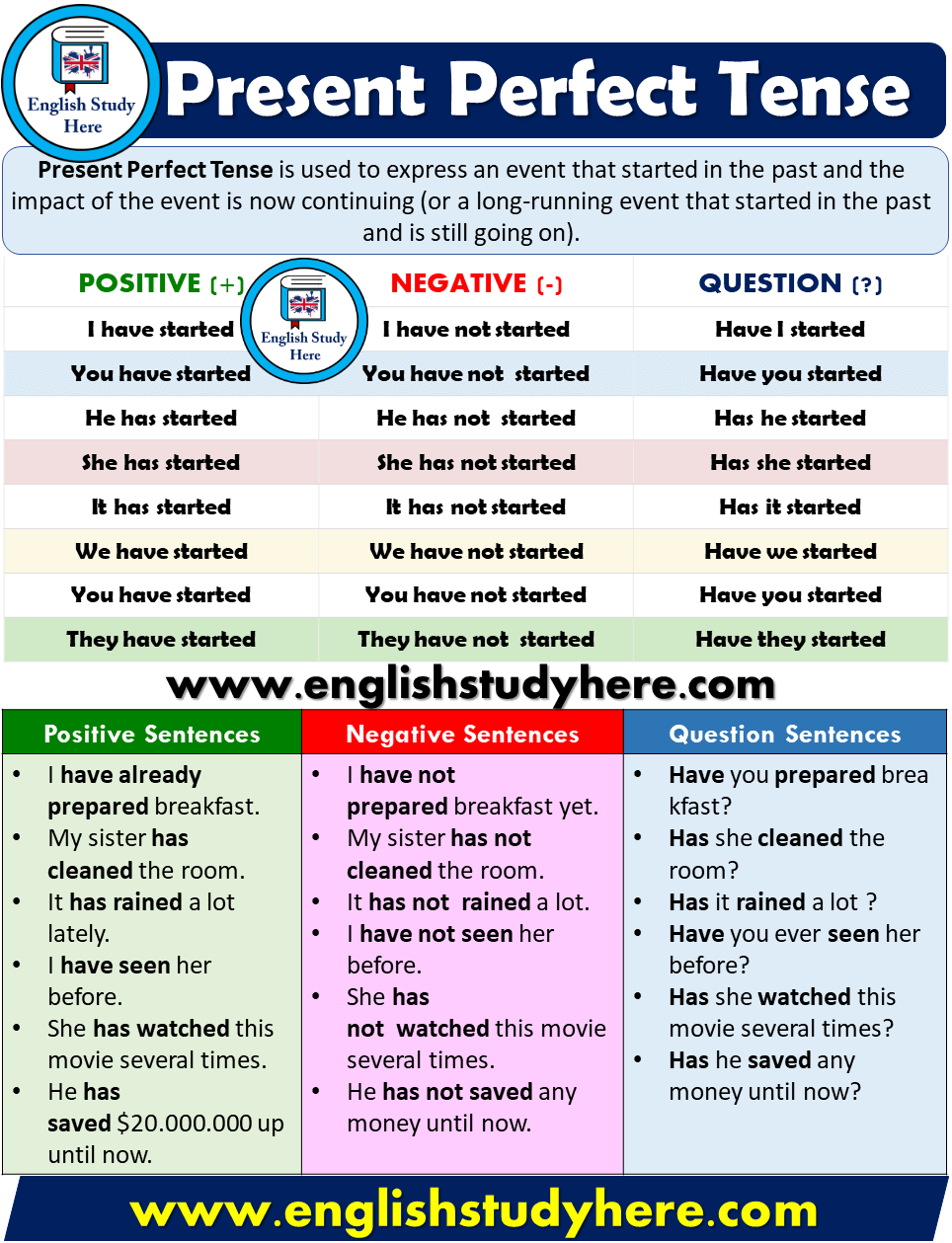



Present Perfect Tense Detailed Expression English Study Here




Present Perfect Tense Good Examples And Important Uses




The Present Perfect Tense Pdf Perfect Grammar Languages




What Is The Present Perfect Tense Grammar Lesson Grammar Lessons Present Perfect Tenses Grammar




Differences Between Present Perfect Tense And Simple Past Tense English Study Page




Present Perfect Tense With Since And For With Exercise And Examples Present Perfect Tense Youtube
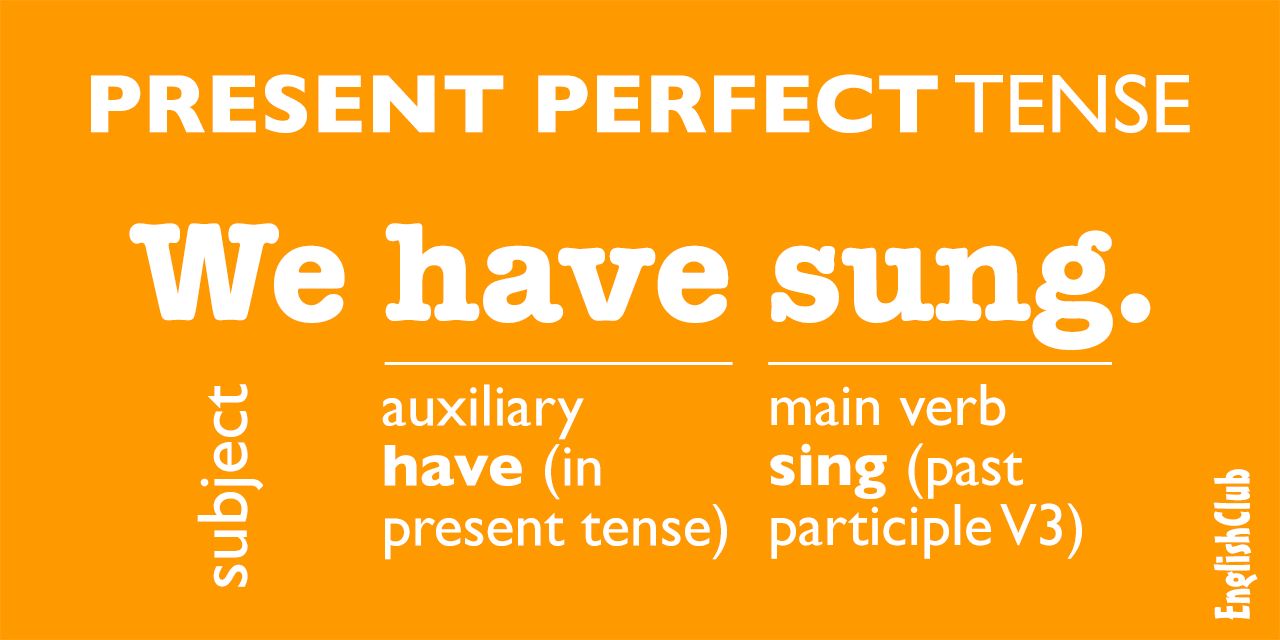



Present Perfect Tense Grammar Englishclub



Tense Tutorial Present Perfect Worldwide Frontier Llc




10 Sentences Of Present Perfect Past Perfect And Future Perfect Tense English Study Here




What Is The Present Perfect Tense Definition Examples Of English Tenses Writing Explained
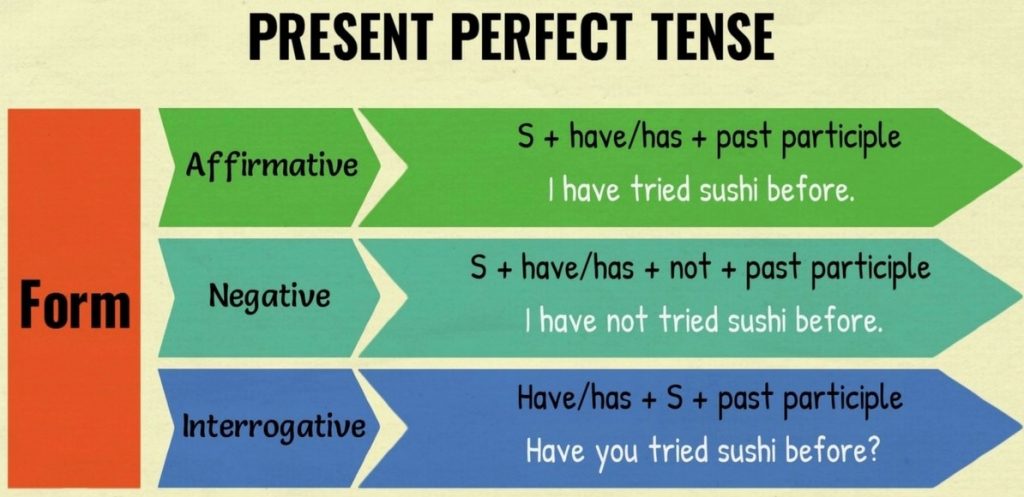



The Present Perfect Tense The Argentinian Problem En Ingles




Examples Of Present Perfect Tense Or Sentences Onlymyenglish
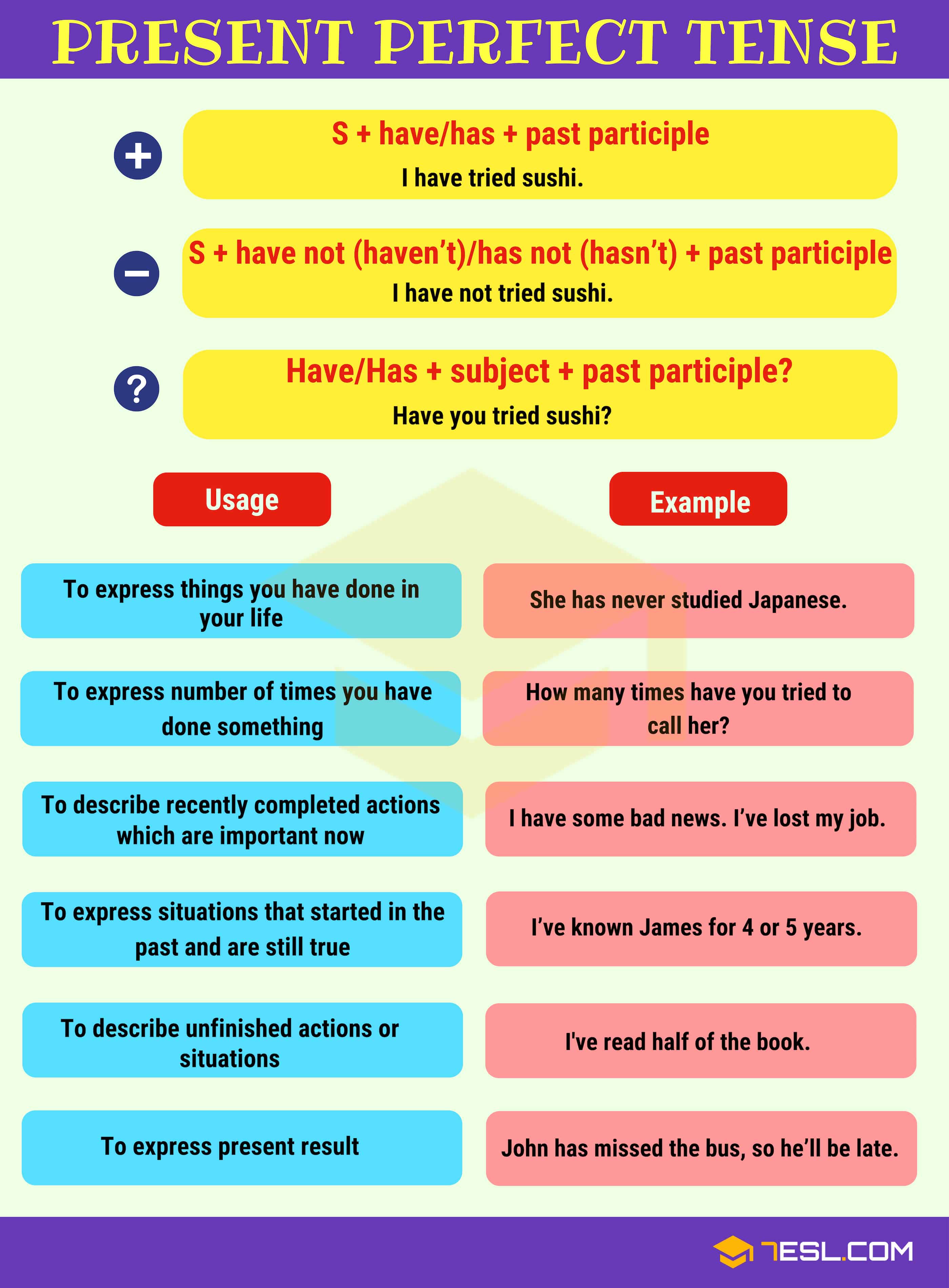



Easy English Grammar Verb Tenses Present Perfect Esl Elt Brain Perks
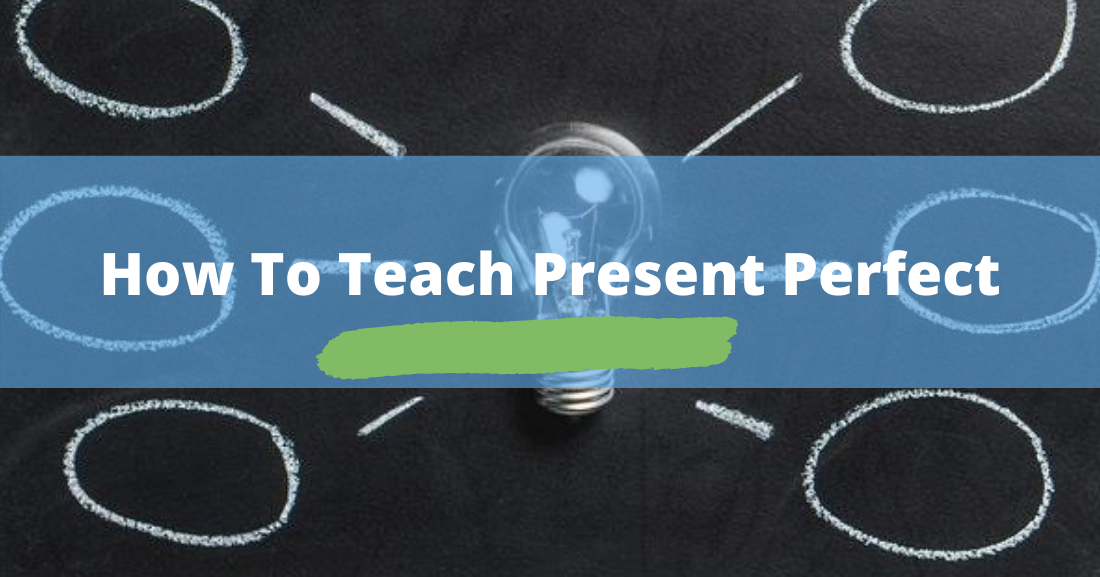



How To Teach Present Perfect Activities And Examples




Present Perfect Tense Fun English Grammar Lessons Pocket Passport




Present Perfect Vs Past Perfect English Grammar Lesson Youtube
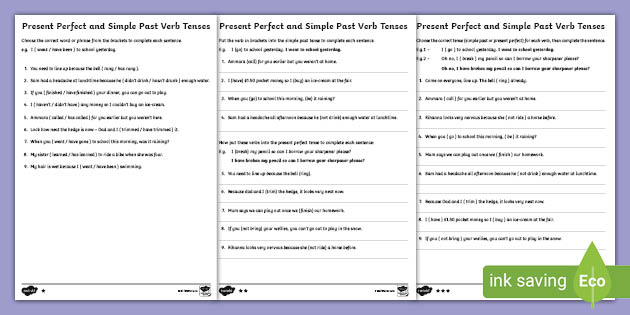



The Past And Present Perfect Form Of Verbs Worksheets
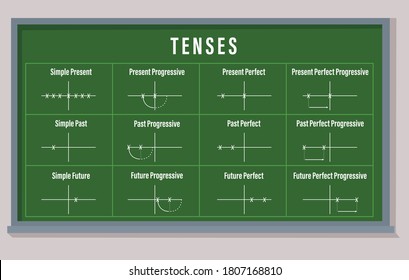



Present Perfect Tense High Res Stock Images Shutterstock




Present Perfect Tense Definition Useful Examples And Exercise Esl Grammar




The Present Perfect Tense In English Connecting The Past With The Present




Topic Present Perfect Tense Lesson Goal Students Will Be Able To Learn And Use Present Perfect Tense Ppt Download




Present Perfect Tense Exercises With Answers




Present Perfect Tense
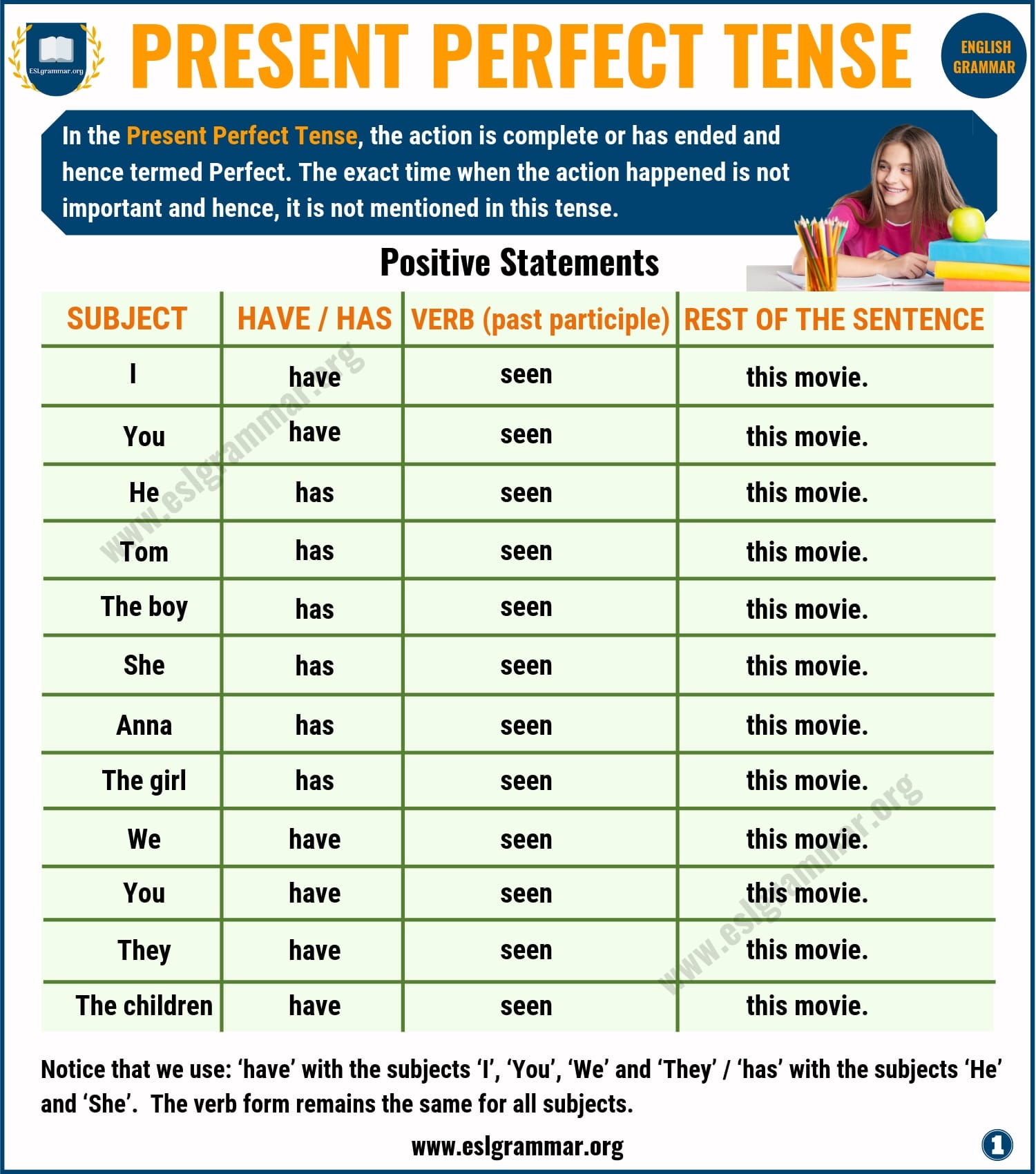



Present Perfect Tense Definition Useful Examples And Exercise Esl Grammar




Present Perfect Tense English Har Din




Present Perfect Tense English Study Page




Structure Of Present Perfect Tense English Study Page




Present Perfect Tense Learn English For Life
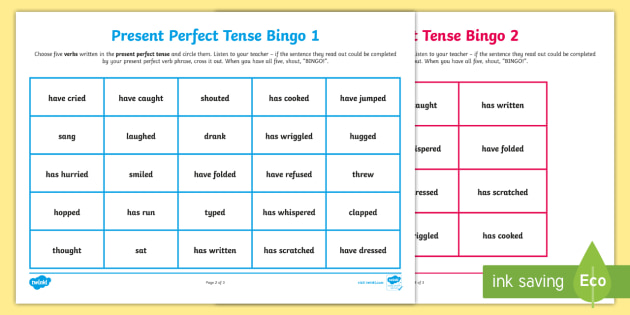



Present Perfect Tense Bingo
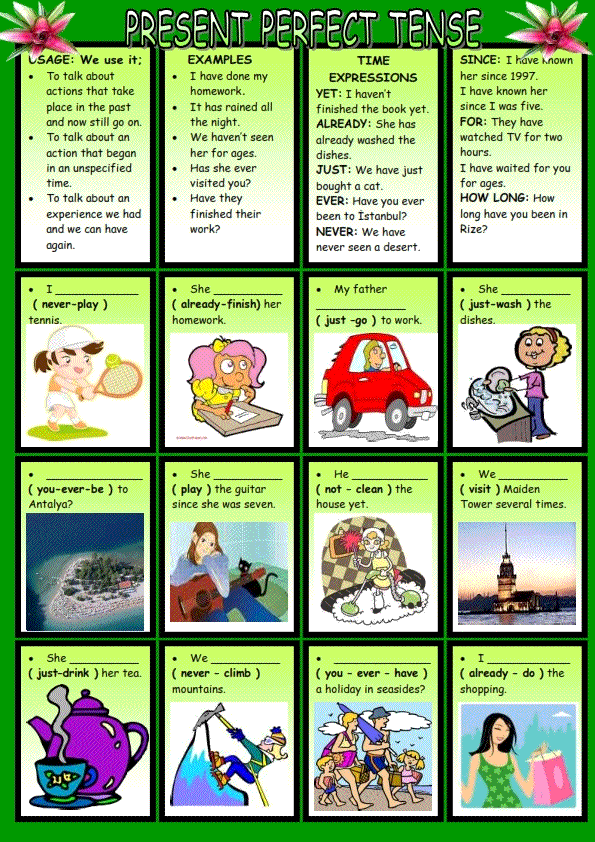



Present Perfect Tense Image Worksheets
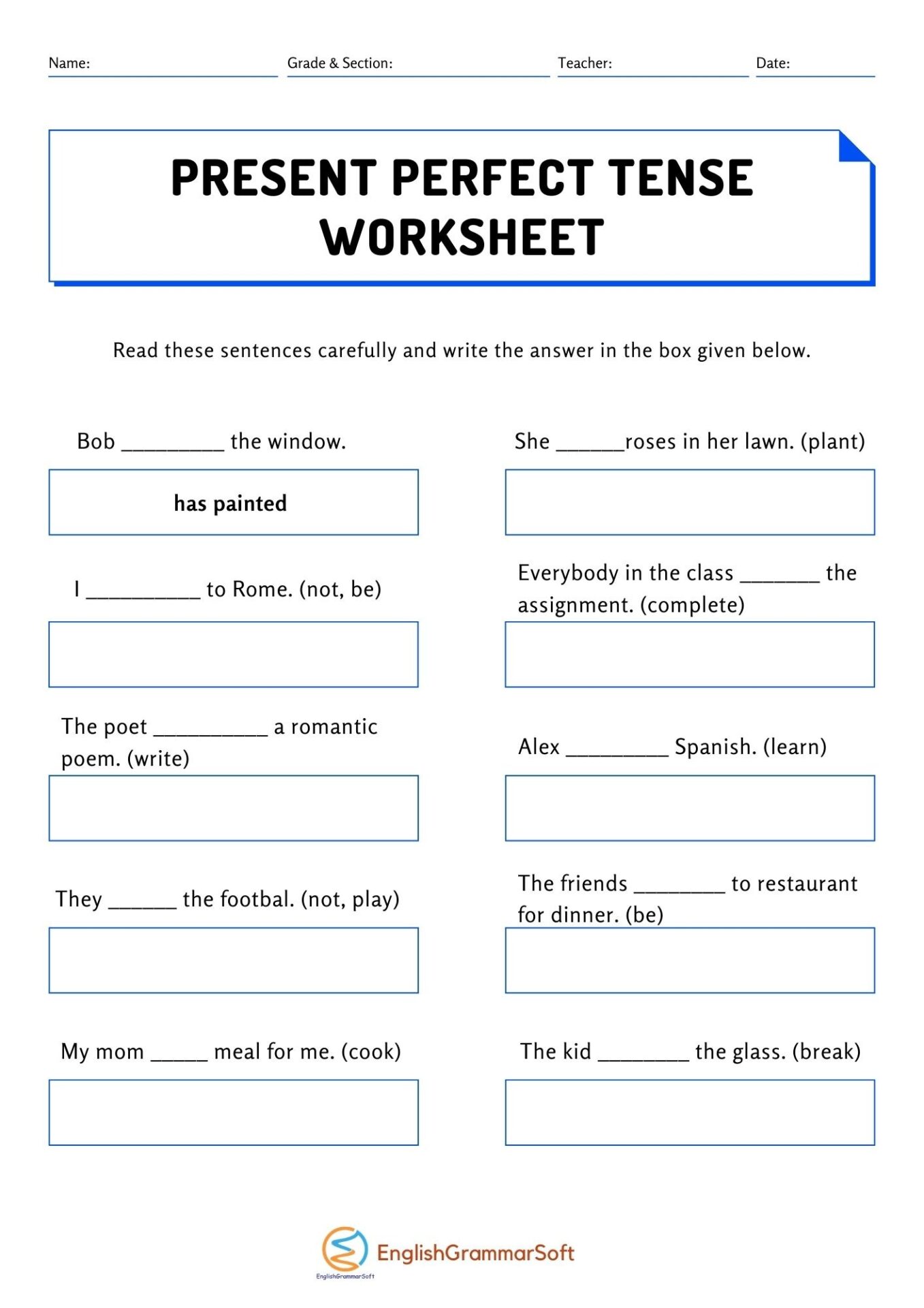



Present Perfect Tense Worksheets With Answers Englishgrammarsoft




How To Use The Present Perfect Tense Correctly English Grammar




Test English Prepare For Your English Exam
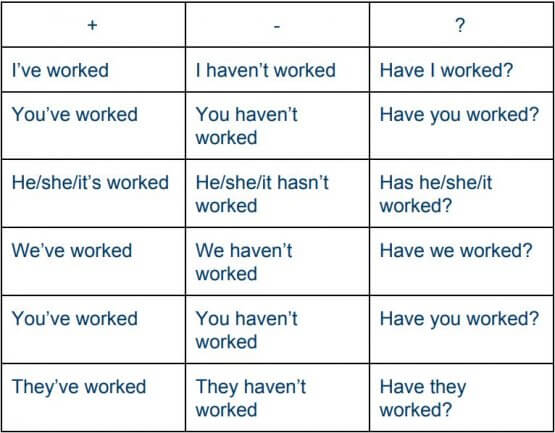



Using The Present Perfect Tense In English




Present Perfect Tense English Grammar Worksheet English Treasure Trove
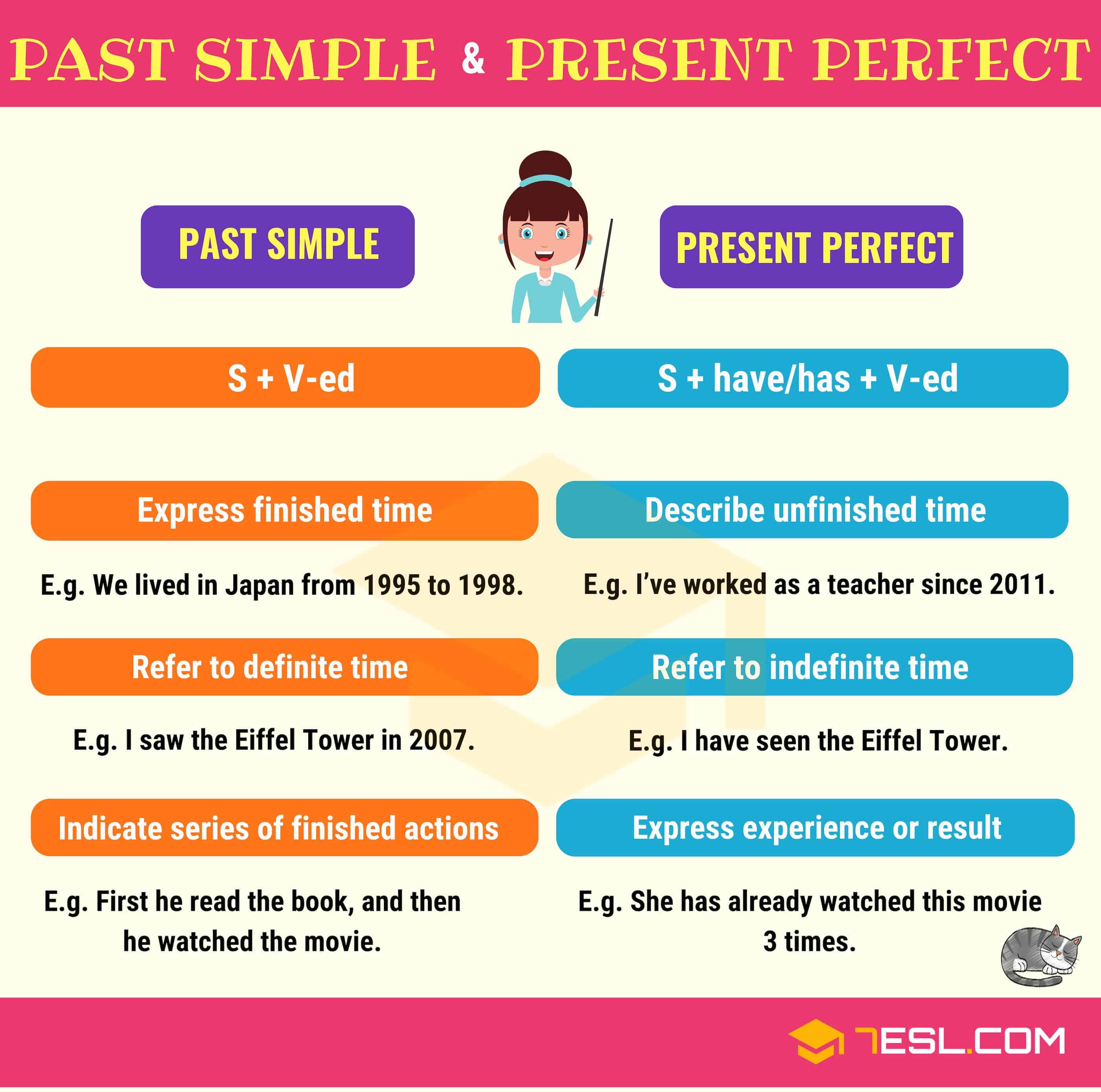



Present Perfect Vs Past Simple Useful Differences 7esl




Present Perfect Tense English Grammar English The Easy Way




Present Perfect Tense With Examples Definition And More
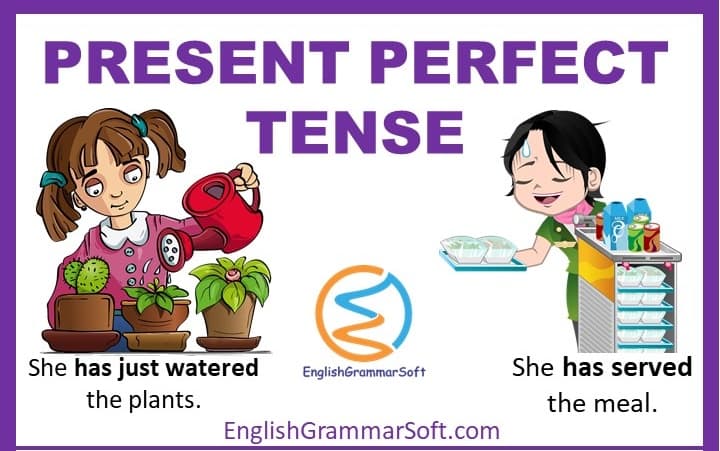



Present Perfect Tense With Examples Englishgrammarsoft
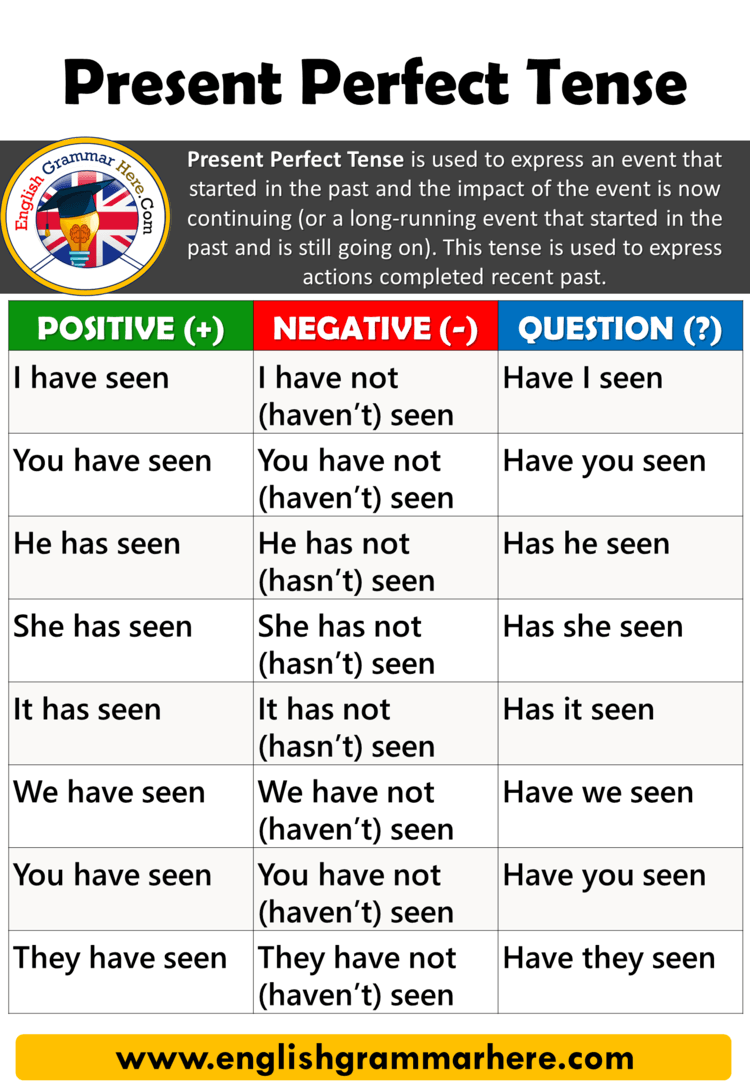



Using The Present Perfect Tense In English English Grammar Here
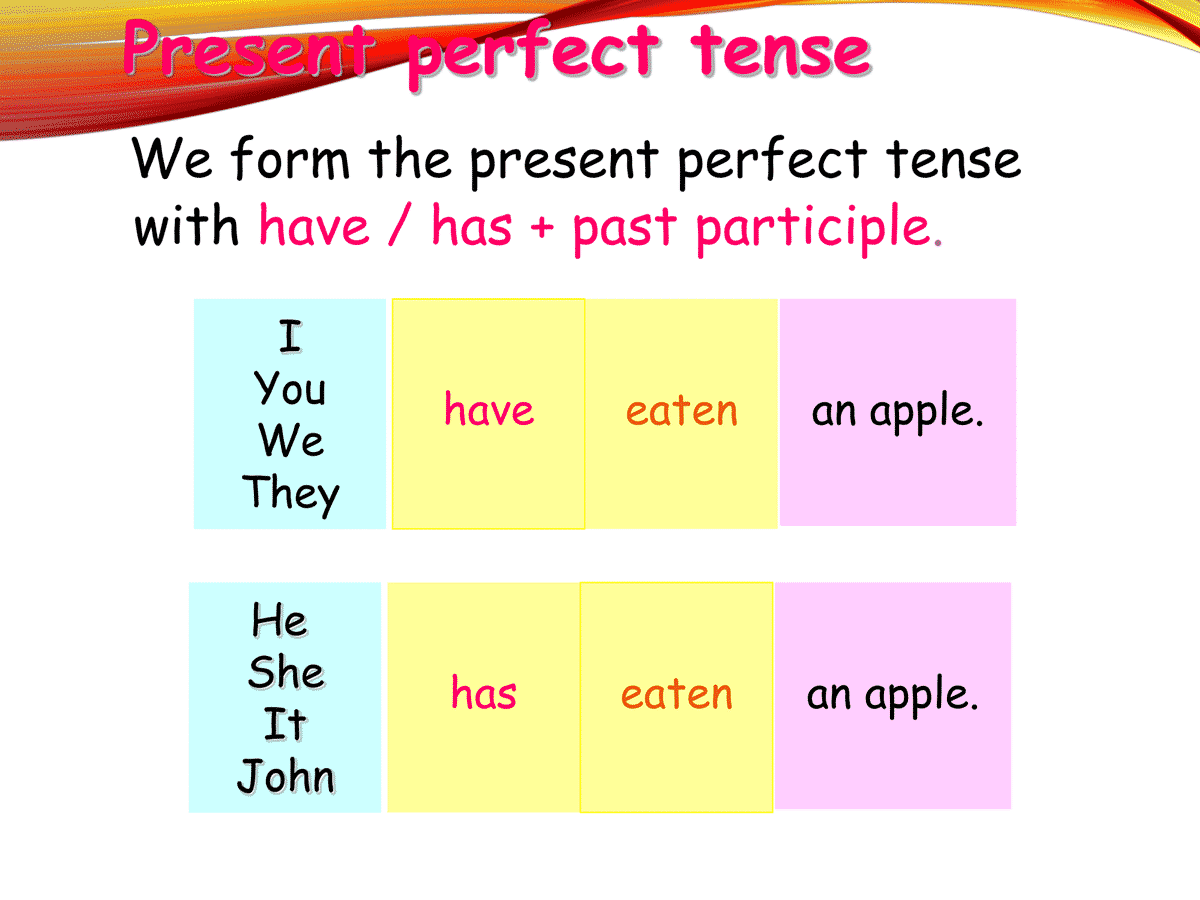



Using The Present Perfect Tense In English Eslbuzz Learning English




What Is Present Perfect Tense Definition Examples Video Lesson Transcript Study Com




Present Perfect Tense Competitive Exam Preparation Lessons24x7




Present Perfect Tense Definition Structure And Examples
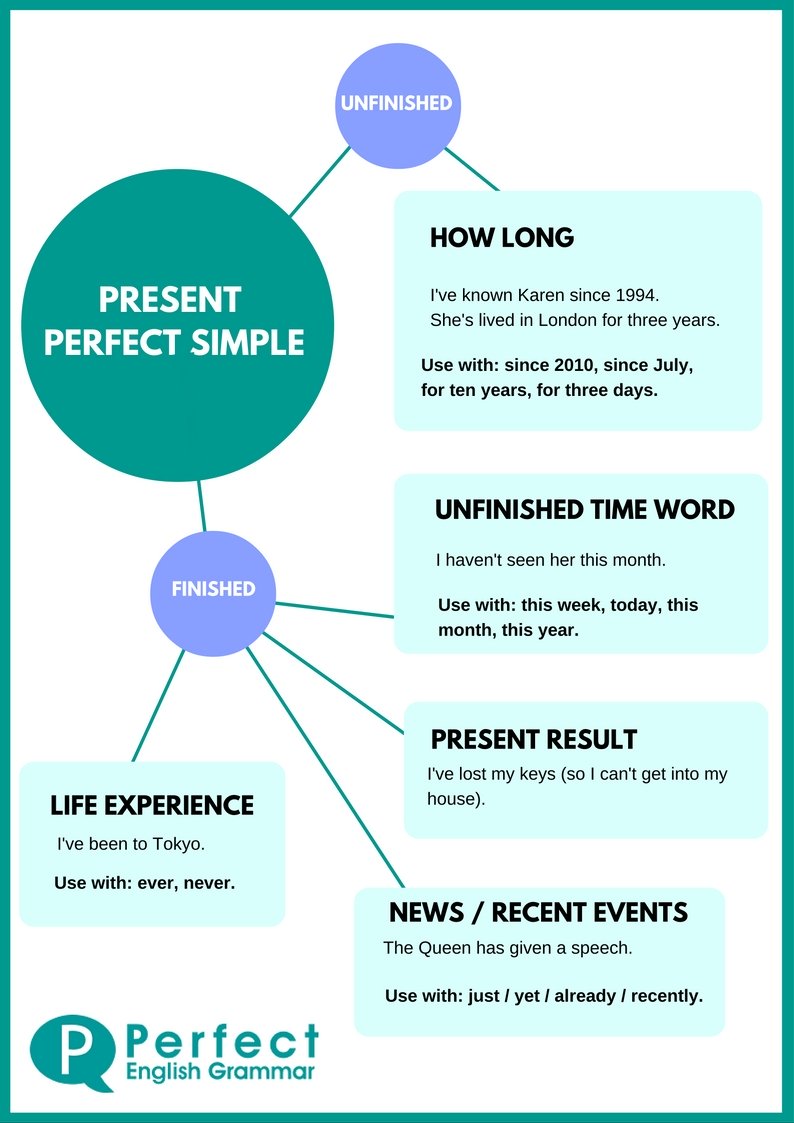



Using The Present Perfect Tense In English



1
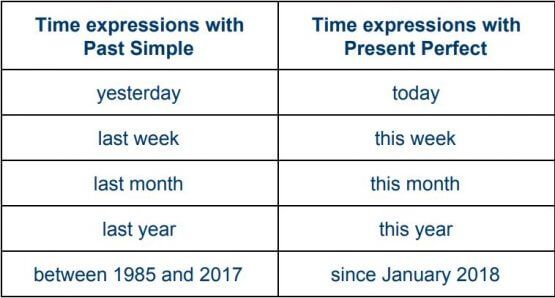



Using The Present Perfect Tense In English




Present Perfect Tense English Esl Worksheets For Distance Learning And Physical Classrooms




The Present Perfect Tense English Esl Worksheets For Distance Learning And Physical Classrooms




30 Present Perfect Tense Example Sentences English Vocabs
(143).jpg)



Present Perfect Tense Quiz Questions Proprofs Quiz




Present Perfect Tense Examples Forms And Uses The Learner S Nook




What Is Present Perfect Tense Thesaurus Com




Present Perfect Tense English Grammar Tenses English Tivi




Present Perfect Tense Examples Sentences Formation Vocabulary Point




Talk2me English The Present Perfect Tense Simplified



Present Perfect Tense Lessons Blendspace




Present Perfect Tense Ginseng English Learn English



0 件のコメント:
コメントを投稿